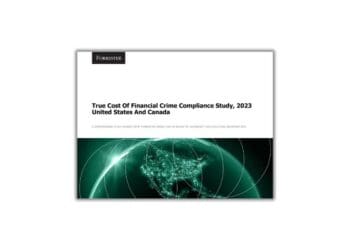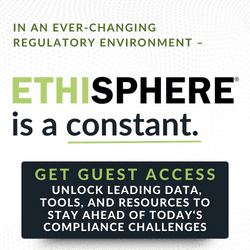The experience of fraud can be so jarring that it frequently causes individuals and businesses to completely change their financial practices. In three out of ten cases of fraud, according to one study, a customer will leave their financial institution.
When customers experience fraud, no matter where or how it occurs, their future behaviors are changed. The fraud threat landscape is evolving, and the competition within financial services in particular is broadening. As a result, financial institutions must seize opportunities to become a trusted resource for their customers and optimize the customer experience (CX).
This experience-driven age requires faster fraud prevention — predicting fraud before it happens and safeguarding the customer journey across every touchpoint. However, establishing competitive differentiation while elevating the customer experience isn’t an easy task.
According to a recent Javelin Strategy & Research study, banks face many challenges, including declining customer loyalty, an emergent fintech market and eCommerce platforms that continuously inch toward providing competing financial services. Ensuring a positive CX makes the difference in whether financial institutions can keep the customers or lose them to the competition.
CX and Payments Modernization
Momentum in payments modernization has yet to let up since the onset of the pandemic. While 2020 was undoubtedly the year of transformation within the payments ecosystem, disruption continues well into 2022. Consumers have wholeheartedly embraced the convenience and ease of digital banking and faster payments. The changing nature of their behaviors and habits, along with the unprecedented digital acceleration that has defined the course of the pandemic, has led to the emergence of new and innovative payments. As a result, the era of payments innovation has arrived and focused on an experience-centric environment in which typical consumer engagement practices are being transformed into value-driven experiences.
There are many developments in the digital payments ecosystem that are driving attention to improving CX. Instant payments and e-money are gaining popularity and are anticipated to comprise over 25 percent of global non-cash transactions by 2025, increasing by 14.5 percent from 2020. Gen Z-favored methods like buy now, pay later (BNPL) are also gaining traction. A Capgemini Voice of the Customer survey revealed that 20 percent of respondents are currently using BNPL solutions, which is predicted to increase to 60 percent over the next two years. According to the same survey, 45 percent of consumers use mobile wallets to make payments, a jump from 23 percent in 2020. Mainstream cryptocurrency payments adoption is rising, and it comes with its own set of customer experience-related concerns.
Forward-looking financial institutions seek to capitalize on the evolving payments ecosystem by using the digital payments trajectory to enable improved CX via safe, seamless transaction experiences with more intelligent fraud protection. Unfortunately, consumers use mediums that are easier to defraud, and with money moving faster, the risk accelerates. In addition, consumers expect that every interaction and transaction is based on a pillar of trust with their financial institution, with heightened concerns on identity theft and secure monitoring of phone numbers and email addresses.
“Criminals have increased their efforts with higher quality, larger volumes and automated attacks. FIs need to step up and improve automation in response to keep track and prevent as many fraudulent attacks as possible. To do this, we need to have a holistic customer view and focus on data quality,” said Terje Aleksander Fjeldvær, SVP and head of the financial cyber crime center at DNB, Norway’s largest financial group.
CX at Account Application
In an informal survey of NICE Actimize’s enterprise fraud customers, financial institutions indicated that they are working to strike the right balance between risk and CX to allow access to accounts quickly, safely, and in a digital-first way that won’t slow down customers who might have thin financial files. And according to industry analyst firm Aite-Novarica, there’s eight times more fraud associated with digital account opening; keeping the door open for legitimate customers while stopping fraudsters in their tracks is a significant challenge. In addition, FIs have already seen that friction at the point of application undoubtedly leads to higher abandonment rates, and conversely, bad actors exploit less friction.
So, how are financial institutions successfully balancing risk and revenue? Fortunately, enterprise fraud technology has advanced to the point where financial institutions can achieve high accuracy, passive verification to enable safe and fast account onboarding.
Identity verification is not stagnant, and it doesn’t stop at onboarding. The prevalence of sophisticated synthetic identity fraud (SIF) requires financial institutions to monitor account-holders for risk signals indicative of SIF continually. The value of account-opening data and continual identity monitoring is just not about stopping bad actors; it is about de-risking accounts earlier in the customer lifecycle to offer new products sooner and drive revenue growth rather than waiting for additional maturation.
Financial institutions have a prime responsibility to step in, provide support and become that trusted resource because the outcome of that event will alter the customer’s mindset. Additionally, it’s not difficult for a customer to switch to a competitor bank, fintech or emerging player, so preventing customer attrition is vital, especially given the expansion of the FI’s competitive landscape today.
Financial institutions must also establish customer relationships earlier; younger generations are experiencing life changes and addressing financial milestones, like car and home loans and investments. As a result, organizations are looking to start relationships early, build upon them and grow alongside their customers as trusted partners.
Impact of Fraud on CX That Leads to Attrition
Victims of identity fraud are three times more likely to leave their primary financial institution (PFI) when they feel that their fraud issue was not resolved by their bank, according again to the Javelin study linked above. Customers depend on their primary financial institution to protect their identity and their assets from theft and fraud. So, when a fraud event does happen, even if the financial institution isn’t at fault, customers are 31 percent more likely to leave the institution.
There’s a significant amount of compromised data that’s stolen via phishing scams and social engineering, in addition to being purchased on the dark web. Data breaches and various scam tactics are all available to buy on the digital underground. Information that resides outside traditionally acknowledged personally identifiable information (PII), such as date of birth and Social Security numbers, is being targeted and used to steal identities and perpetrate fraud. Information such as passwords, email addresses and mobile phone numbers are now increasingly vulnerable to criminals and fraudsters.
Cybercriminals constantly adjust their tactics, and a single negative experience can mean an entire transfer of all the products that a customer has at a financial institution. Therefore, financial institutions must proactively detect and prevent fraud and reduce attrition; improving CX directly impacts the organization’s bottom line. AI- and cloud-driven adaptive intelligence platforms can provide the insight into data, analytics, decisioning and operations that financial institutions need to emerge as fraud fighters.
These tools can help FIs reduce the emotional toll of fraud on customers and elevate their experiences, paving the way for new revenue-generating opportunities for financial institutions.



 Glenn Fratangelo is director of fraud product marketing at
Glenn Fratangelo is director of fraud product marketing at 








